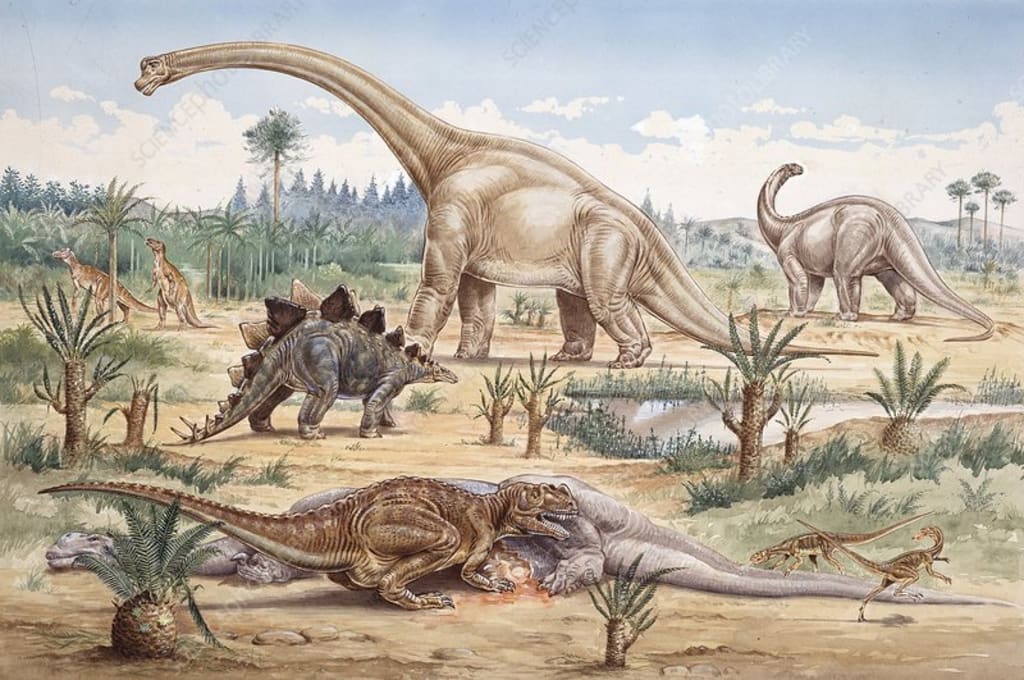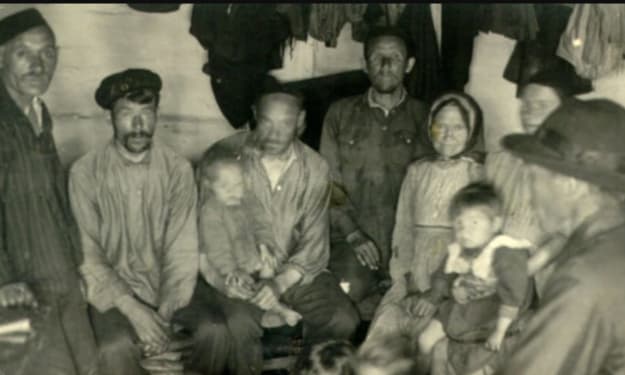
Dinosaurs ruled Earth for 160 million years, but their world was destroyed by a massive rock the size of Everest falling from space. The Cretaceous period, which lasted 79 million years and became the longest period of the Mesozoic era, saw the formation of ice caps at the poles, harsher winters, and the emergence of lush vegetation. During this period, flowering plants emerged, insects evolved, and birds evolved. This led to the evolution of herbivorous dinosaurs and many mammalian species.
The number of carnivores, ungulates, insectivores, and primates increased under favorable conditions. Most mammals were small rodents and predators, with fossilized heads of 20 centimeter-long Granopio Dentiacudus found in Argentina and Madagascar. Larger animals, such as the Ventana Certici Marmot, had massive crests on either side of their skull for self-protection and an excellent sense of smell. The Ropano Mammoth, the real giant among mammals, had a one-meter body and weighed 12 to 14 kilograms.
Dinosaurs were the pinnacle of prehistoric evolution, at the top of the mesozoic food chain. A great number of dinosaur species of various sizes populated all continents, with the smallest being the Ogdentavis Congress. The smallest dinosaur was the Ogdentavis Congress, which had a head no longer than 14 millimeters and a beak.
The largest animal on Earth, the alamosaurus, was 29 meters tall, 38 tons, and had a 12 meter long tail. It lived on the Yucatan Peninsula, where it hunted for fresh greenery. A herd of 50 alamosauruses, herbivores, consumed up to a ton of vegetation per day to stay in shape. The middle-aged predatory tarbosaurus, the largest predatory dinosaur of the Cretaceous period, hunted for prey in floodplains. The tarbosaurus walked on two hind legs and had six dozen long sharp teeth reaching up to 85 millimeters.
An adult pachycephalosaurus, 4.5 meters long, weighed 450 kilograms and had a 25 centimeter thick bone dome that protected its skull from attacks. It was primarily herbivorous, crushing leaves, seeds, and fruits with its small sharp teeth. It also ate small amphibians, shellless animals, mammals, and newly hatched dinosaurs.
A female ankylosaurus, a nightmarish chimera, weighed 450 kilograms and was covered in powerful bone armor. It had a massive club-like knob on its tail, protecting against predators and cannibal reptiles. The family moved into a thick forest near newly formed rocky mountains two hours before the impact.
In North America, young reptiles had a massacre when an absent-minded carnotaurus wandered into the territory of the Tyrannosaurus Rex, traveling up to 50 kilometers per hour.
The Tyrannosaurus, a large dinosaur, was able to run away from its carnotaurus, but the Tyrannosaurus was caught by the Tyrannosaurus. The Tyrannosaurus had an excellent sense of smell and binocular vision, allowing it to accurately determine the distance to its prey. The Tyrannosaurus quickly attacked the Tyrannosaurus, weighing up to 6.8 tons and outweighing the carnotaurus by almost 5 tons. The Tyrannosaurus's powerful jaws allowed it to consume up to 100 kilograms of meat per day, equivalent to the daily intake of three or four lions.
As the Tyrannosaurus ate its lunch, scientists proposed that it was the asteroid impact that led to the Cretaceous Paleogene extinction event. Iridium, a rare substance found in 66 million-year-old clays, was found in 66 million-year-old clays around the world. Scientists suggested that the metal was likely brought by an asteroid in a collision event. Ten years later, a 180-kilometer-diameter crater named Chixula was discovered in the Yucatan Peninsula, which coincided with the dinosaur extinction. As the asteroid moved away from the crater's center, less metal was found.
As the Tyrannosaurus ate its lunch, a 10 km-ton rock weighing several trillion tons flew into the atmosphere, accelerating at a speed of 20 km per second. This event was another evidence of the mass extinction that followed the asteroid impact.
this process heated the giant rock to tens of thousands of degrees celsius making it much brighter than the sun at the same time the tyrannosaurus was having a little break from its lunch it lifted its head up and was blinded by the light of the blazing sky the dinosaur quickly lowered its head closing its eyes but the light was burning them even through closed islands the heat incinerated the reptile skin set fire to the trees and grass around it a second later the asteroid disappeared over the horizon leaving the glowing sky behind tyrannosaurus rex got a little break but only for a moment nothing was happening for a few seconds but then the sky got blindingly bright the asteroid crashed into the gulf of mexico near the northern coast of the yucatan peninsula the energy released by the impact was approximately equivalent to 10 billion hiroshima atomic bombs in a second the asteroid penetrated about 20 kilometers into the earth's crust the whole globe was shuttering like a thousand bells from the impact [Music] to put this into perspective a relatively recent krakatoa volcano eruption caused half of a crew member's eardrums to rupture on one of the ships 70 kilometers away the asteroid's impact was a million times more powerful furthermore shock waves rushed in all directions faster than the speed of sound right after the collision they were so strong that they skinned animals alive lifted them up into the air swirled them around and crushed everything even hundreds of kilometers away from the crater the heaviest dinosaurs flew like balloons the t-rex sustained a severe concussion and died in an instant immediately the shockwave lifted its body up into the air for several seconds the wave continued to spread going a few times around the globe but even before killing the t-rex the asteroid destroyed the herd of alamosauruses that we saw previously animals were grazing right next to where the infernal rock fell dinosaurs couldn't escape the unthinkable heat it burned everything to the ground turning animal bones to ashes meanwhile the female ankylosaurus with her four babies was peacefully eating leaves in the forest they were hundreds of kilometers away from the impact site however they died even before the alamosauruses the red-hot asteroid caused huge fires while passing through the atmosphere one of them broke out where a family of ankylosaurus were grazing the fire instantly incinerated the forest leaving the reptiles no chance to survive the asteroid also knocked out 15 trillion tons of rock from the planet and sent it high into the sky a small portion flew into outer space while the remaining parts including house-sized boulders began to fall back from orbit at the same time glass rain started it was raining hot 5 millimeter rock falls the stone hail and the scorching rain have killed innumerable animals however the pachycephalosaurus who was hunting near the ocean in north america was lucky it didn't die from fires and boulders falling from the sky but a bit later when a gigantic 100 meter tsunami rose from the ocean to get some idea about its scale consider the devastating tsunami in japan of 2011. those waves were barely 10 meters high nonetheless almost the entire island state incurred losses but the giant tsunami caused by the asteroid impact went thousands of kilometers deep into the land.
The asteroid impact on the future USA flooded the entire territory, causing a series of terrible earthquakes and volcanic eruptions. The earthquakes were 50 times stronger than any known to humanity, and the planet was shaking so hard that volcanoes erupted, causing a massive cloud of dust to storm across the planet, burning everything in its path. The impact reached Mongolia at a speed of 18,000 kilometers per hour, and the temperature rose to 150 degrees Celsius an hour and a half after.
All living creatures died, except for Tarbosaurus and other animals, who managed to escape by hiding in underground caves. Acid rain followed, causing the earth to become cold, dark, and deserted. Only decaying fungi and molds could reproduce, and countless animals starved to death. Tarbosaurus was the last dinosaur on the planet, but occasional dinosaur eggs may have been preserved underground.
The era of dinosaurs came to an end, and the cenozoic era began. Over several decades, dust clouds dissipated, and heat and sunlight reached the surface. Nature revived from the ruins, with horsetails, ferns, angiosperms, and grass emerging. Mammals, some of which survived the disaster in underground burrows, adapted to extreme conditions, and consumed relatively little food. The success of mammalian evolution led to the emergence of humans.
About the Creator
PDZICOX
Everyday articles.
The information on this page will help you learn more about mystery, news, facts, psychology, geography and more. We will provide the best resources for learning about these topics.






Comments
There are no comments for this story
Be the first to respond and start the conversation.